site search
online catalog
INSCRIBED CIVIL WAR BOWIE OF ANDREW E. BENSON CO. D, 123rd NYV, TWO BUTTONS, G.A.R. VETERAN’S ID BADGE, CELLULOID PIN AND BOOK BY FELLOW VETERAN R.C. BULL
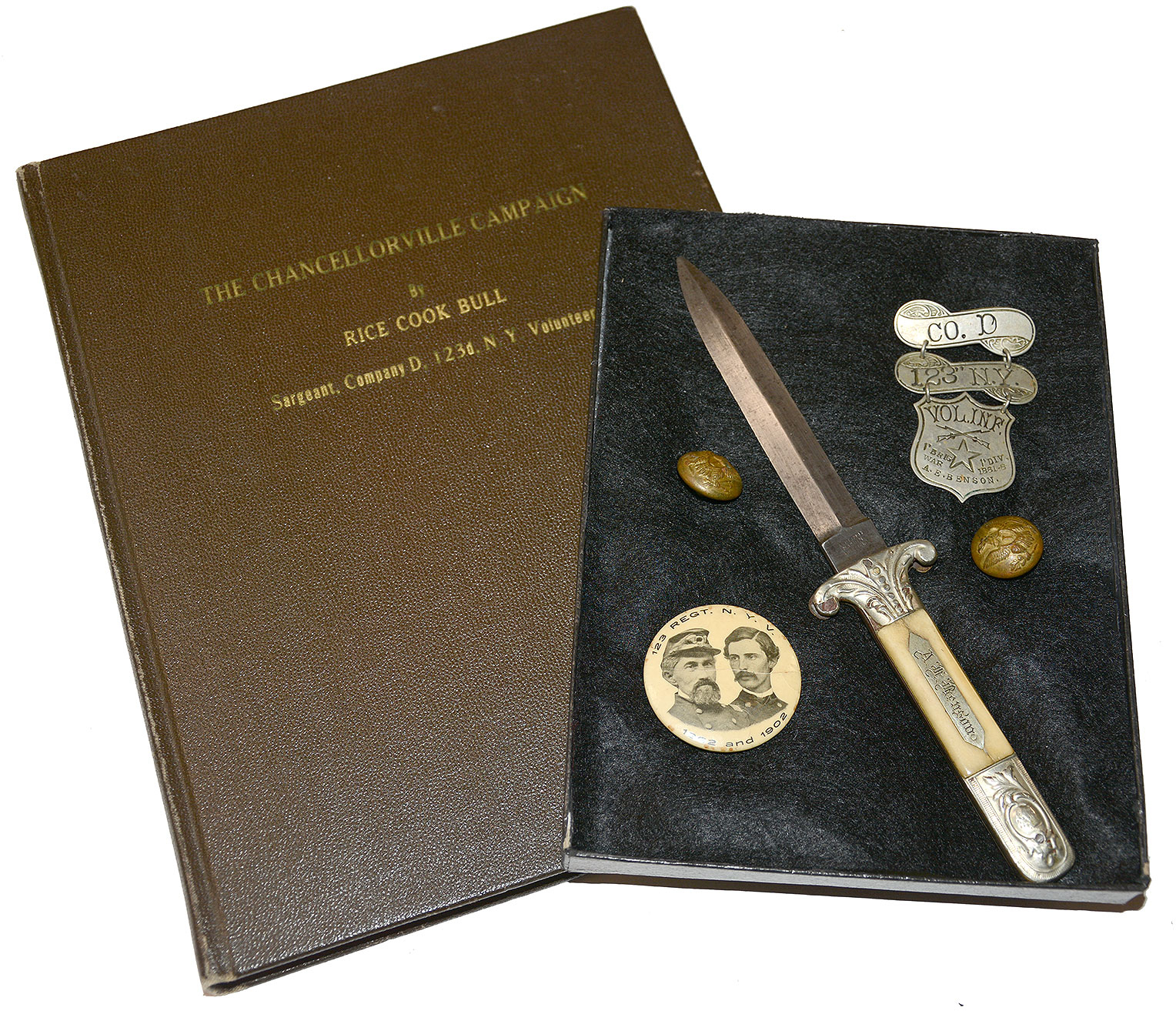
Hover to zoom


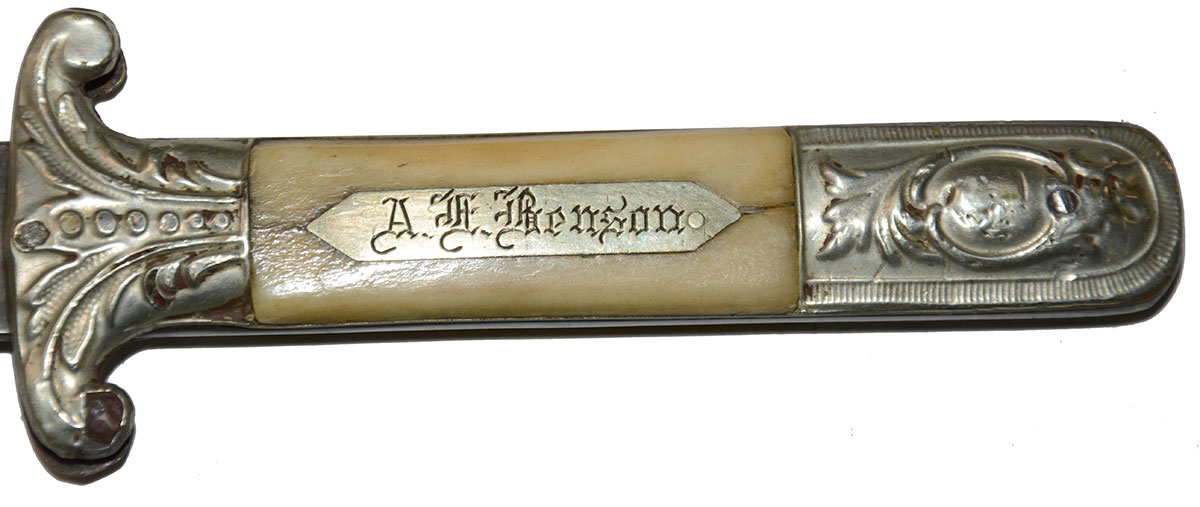
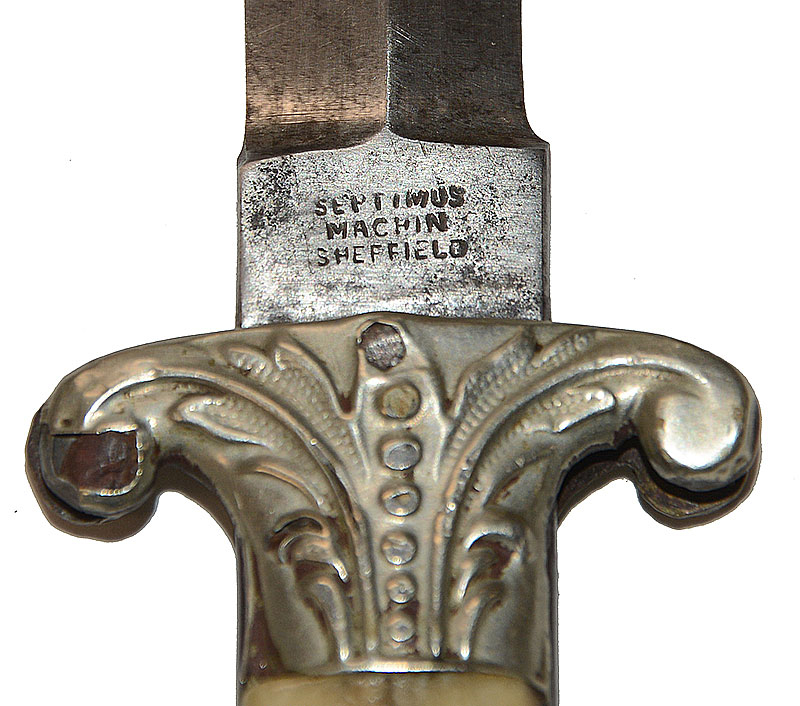

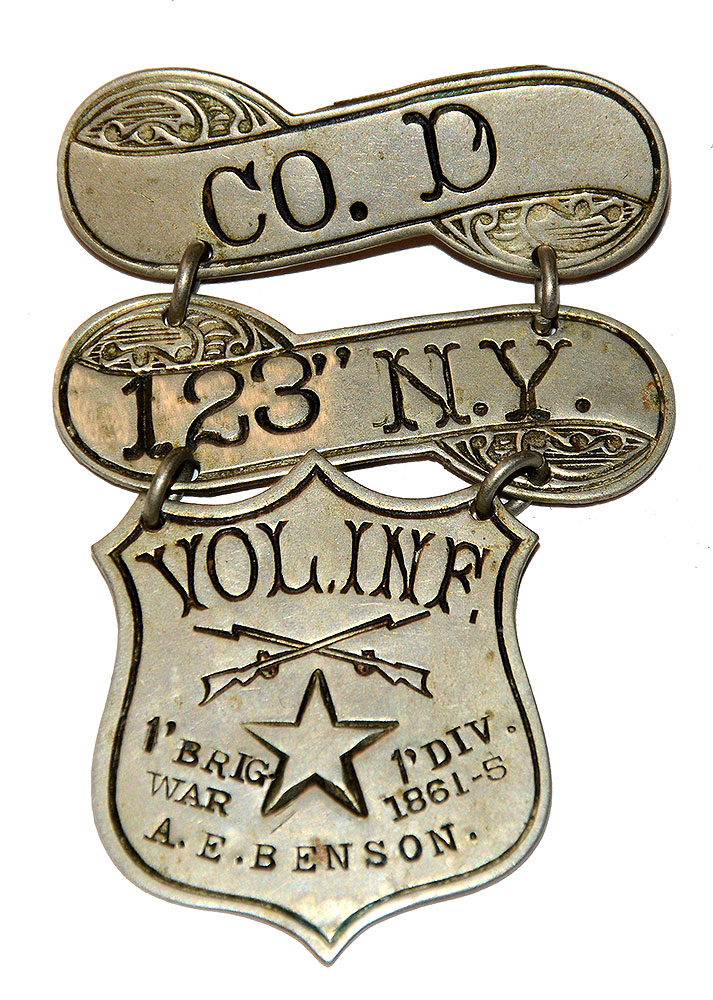
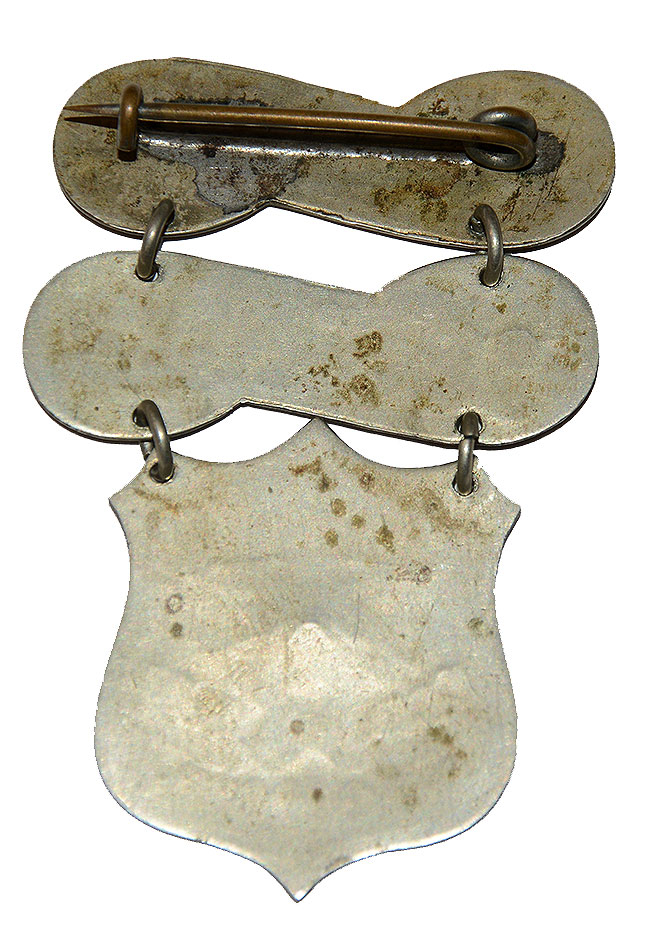
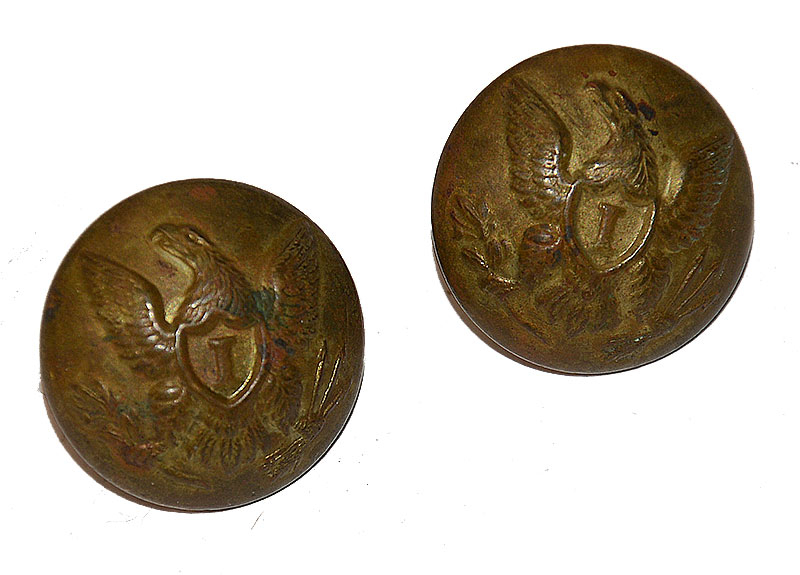
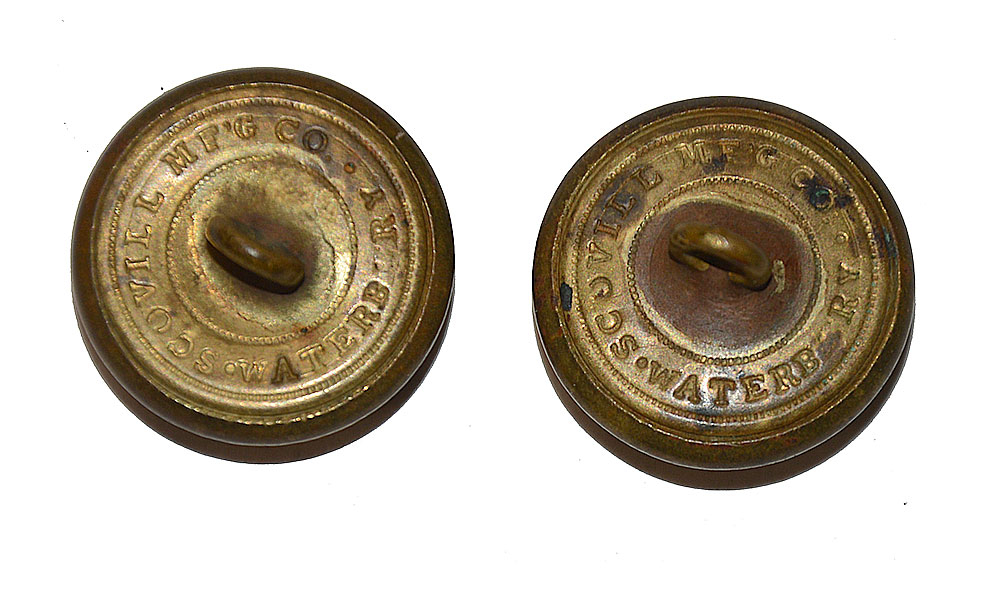
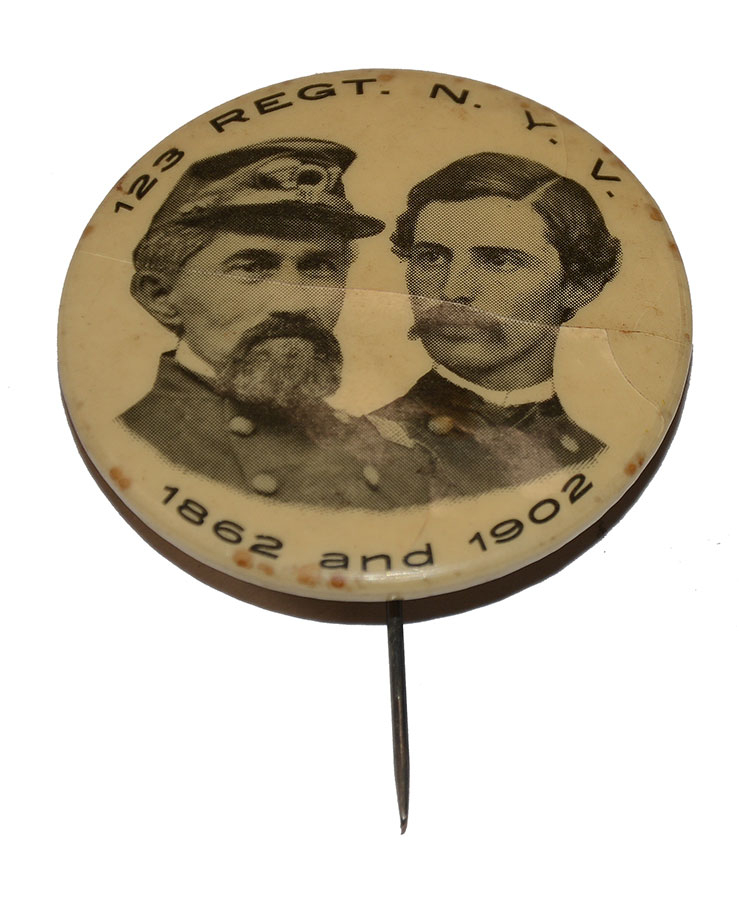
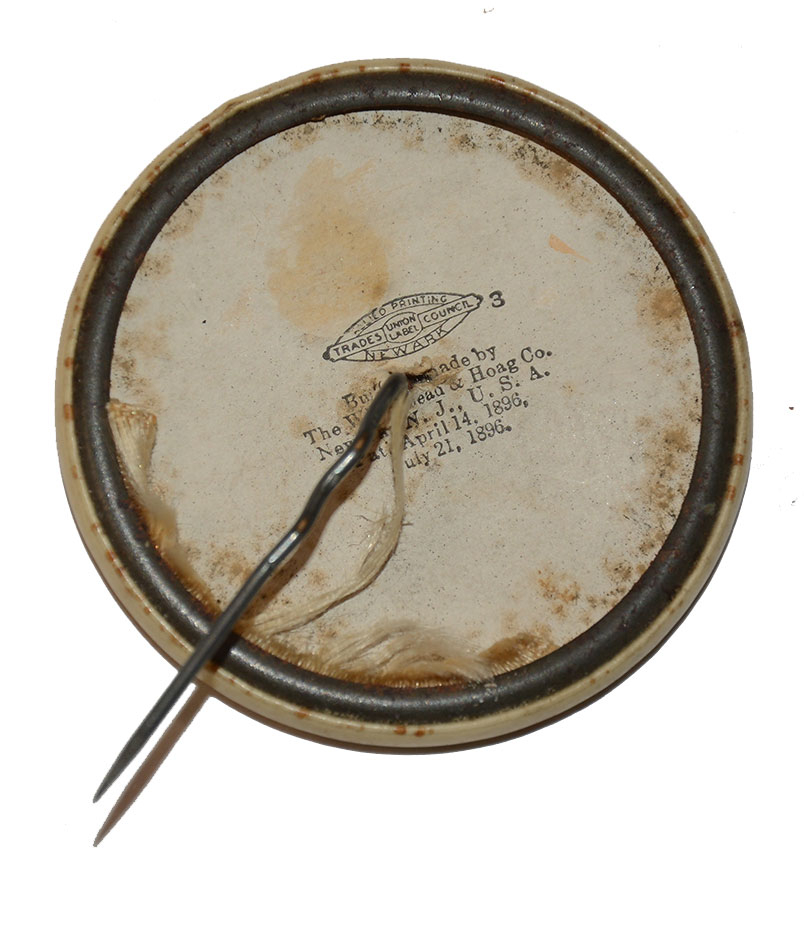
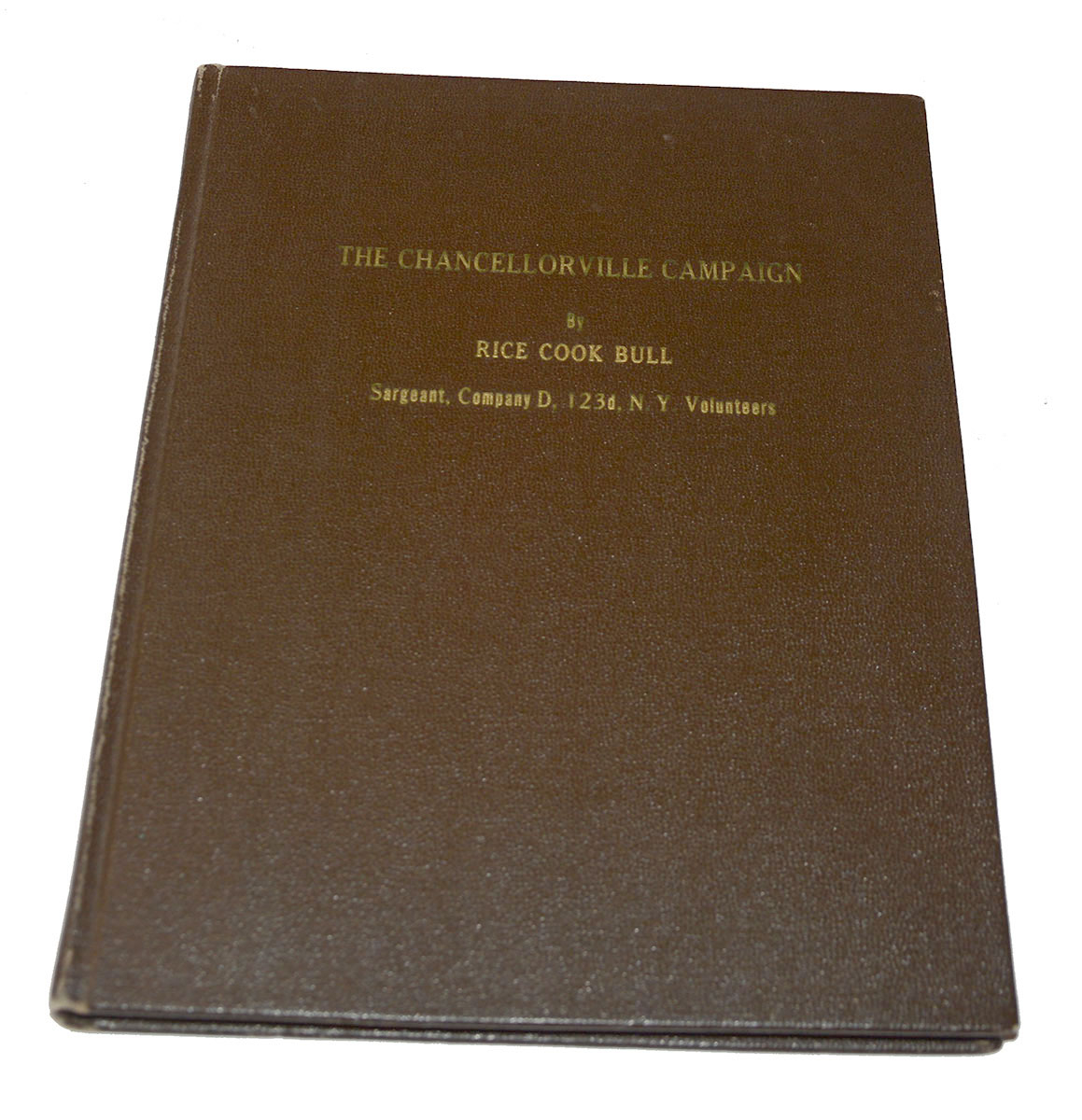
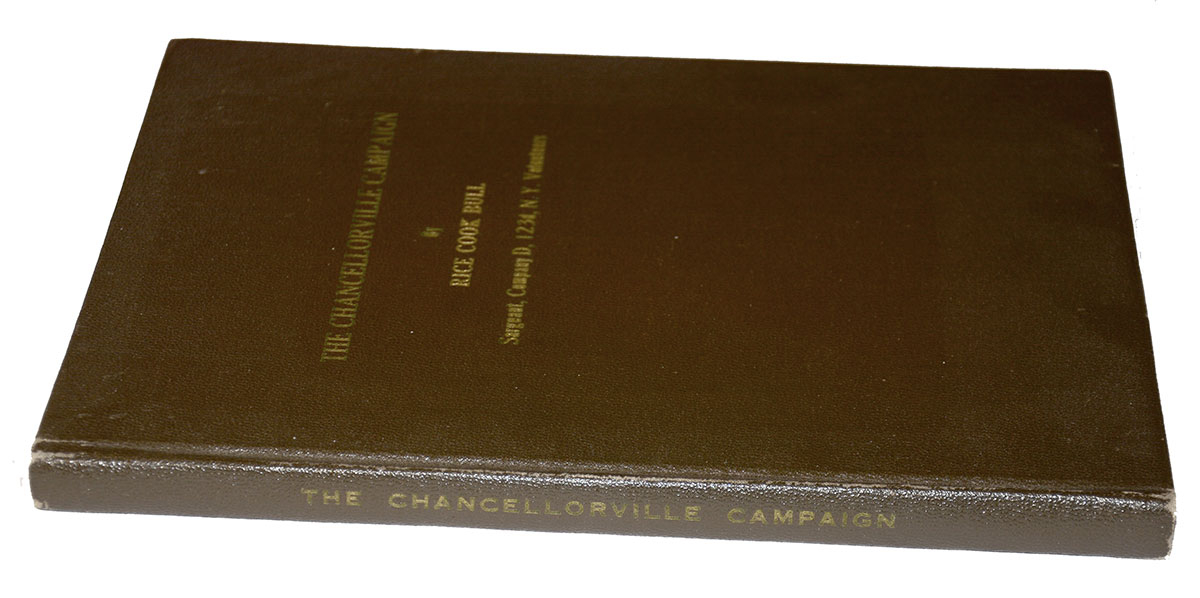
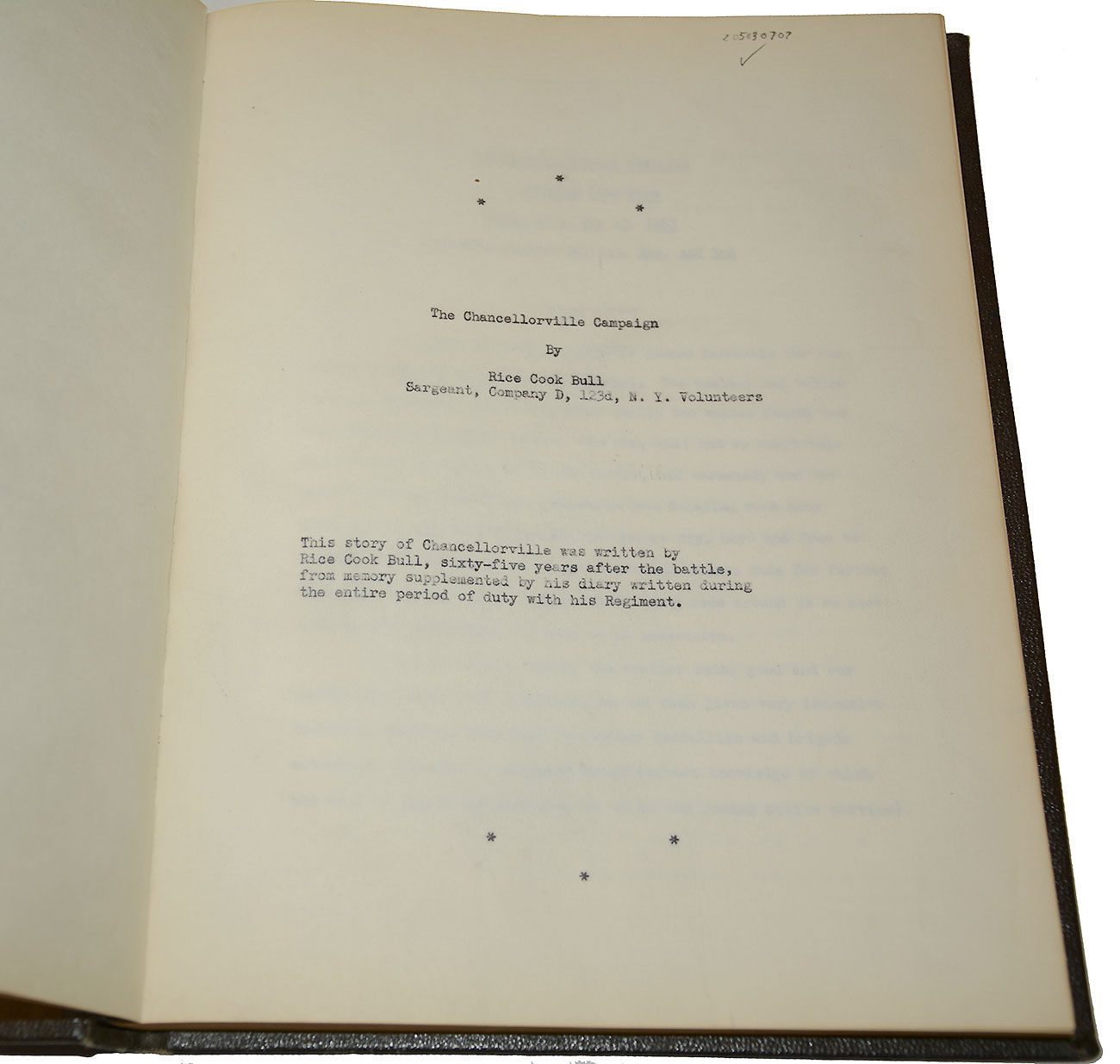
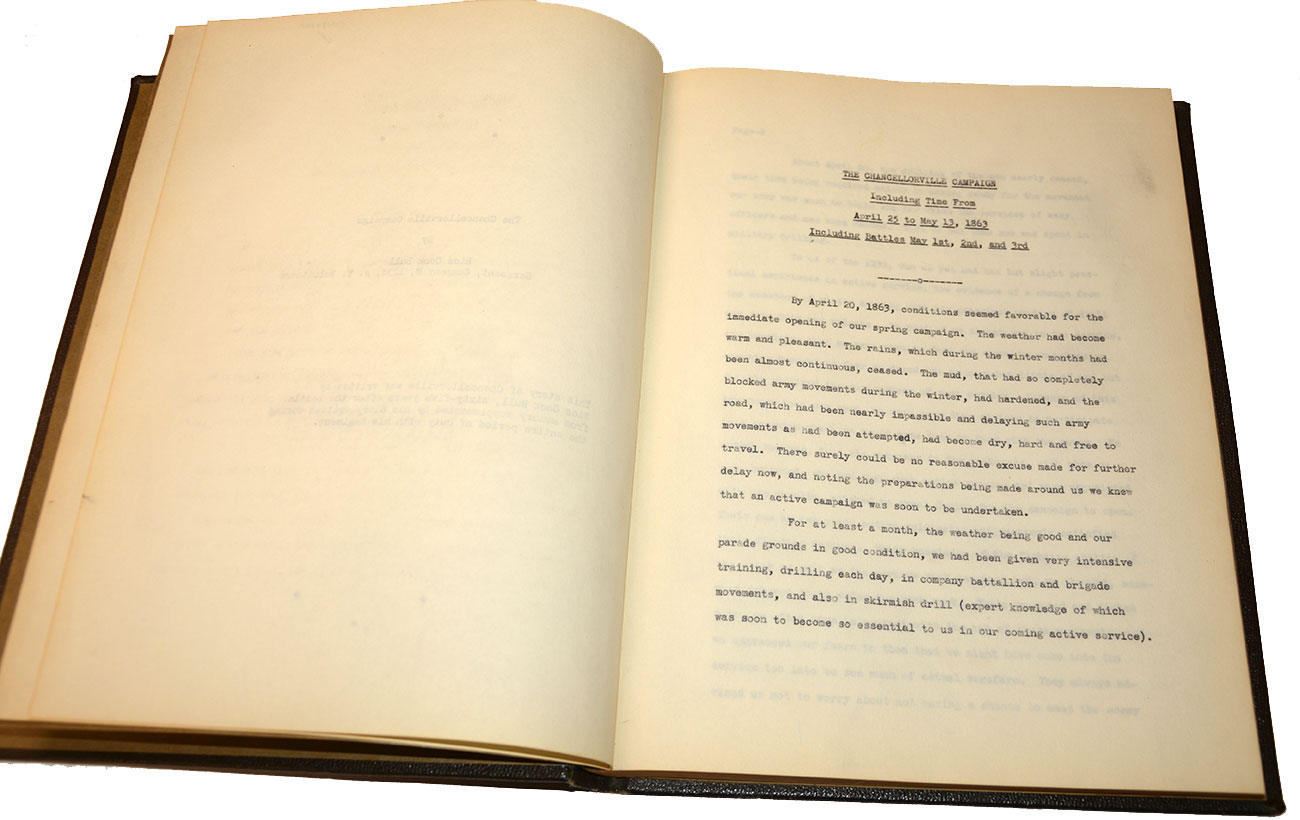

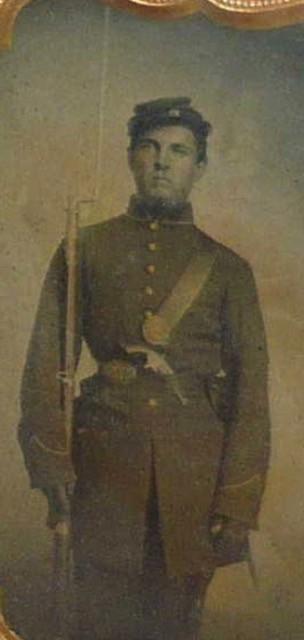
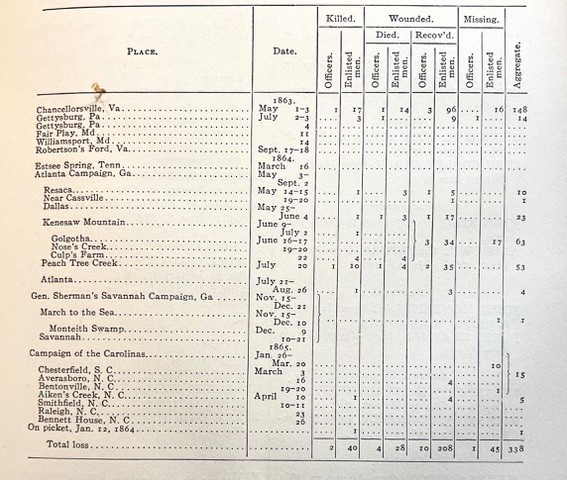
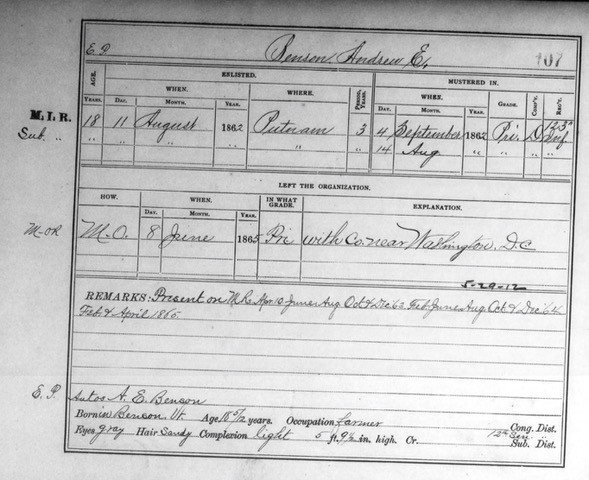
$2,950.00
Quantity Available: 1
Item Code: 534-40
Shipping: Determined by Method & Location of buyer
To Order:
Call 717-334-0347,
Fax 717-334-5016, or E-mail
A nice grouping from a veteran of the 123rd New York, which served from September 1862 to June 1865, seeing action in the eastern and western theatres of war in the 12th/20th Army Corps. The group consists of his bowie knife, typical of those purchased by new recruits to increase their warlike appearance, engraved with his name on an inset plaque in the grips, two eagle-I infantry buttons, his postwar veteran’s identification badge, a celluloid pin from a 40th anniversary reunion or celebration of the regiment in 1902, and a booklet by R.C. Bull, a sergeant in Benson’s company, recording his experiences at Chancellorsville, the regiment’s first and rather bloody experience of battle. We note that Bull’s full diary was edited and published by K. Jack Bauer in 1995, is generally available through book sellers, and would certainly cast light on Benson’s extensive wartime experiences.
The knife is Sheffield-made and marked on the ricasso by Septimus Machin, a pen and knife maker who was in business by 1846. It measures 8-1/4” overall, with a double edge spearpoint blade 4-1/2” long with prominent median ridge, fitted with foliate embossed white metal mounts and white bone grips with an inset plaque on one side engraved, “A.E. Benson” in Old English. The knife shows off well and rates good for condition. The very tip of the point is missing, but blade in general is smooth metal with muted gray color and good edge. The bone grip slab with the inlaid plaque shows a hairline crack running forward and back from the pointed ends of the plaque, but is stable. On what would be the lower tip of the guard on that side is a small half-circle missing from the embossed white metal. This sort of knife was very popular among new soldiers, increasing their martial appearance and is frequently seen in period photos taken early in their service. There is no scabbard, but it was likely a leatherette-pasteboard scabbard with mounts matching the hilt of the knife in material and color.
The two wartime buttons are both wartime Eagle-I infantry buttons by Scovill. Benson’s veteran’s badge is a three-piece ladder badge- two white metal bars and a shield at the bottom, a very popular form among veterans, assembled and stamped for the veteran by vendors at reunions, etc . The top bar has a pin back and reads “Co. D;” the second, “123” N.Y.;” and the shield reads, “VOL. INF.” at top, over crossed rifles, with the star corps badge of the 12th and 20th Corps below that, with “1 BRIG” on its left and “1 DIV.” on its right, “WAR 1861-5” just below, and “A.E. BENSON” stamped at bottom is a slight curve. The celluloid pin with it reads “123 REGT. N.Y.V.” at top and “1862 and 1902” at bottom has bust views of their first and last Colonels: Archibald McDougal, who died of wounds received at Dallas in 1864, and James C. Rogers, who rose from Major in the regiment and was a brevet brigadier general. The book on the Chancellorsville Campaign by R.C. Bull was privately published (with no publication date or place,) is 108 pages long, measuring 8-1/2 by 11 inches, and is in good condition.
Born in 1844 in Vermont, Benson crossed into New York to enlist in Company D of the 123rd NY in Putnam, Washington County, NY, certainly enticed by a $100 bounty paid by the county. He enrolled August 11, 1862, mustered into service as a private in Co. D of the 123rd NY on Sept. 4, and served with them to the end of the war, mustering out with the regiment in June 1865. The regiment left the state on September 5, 1862, and was first posted to the defenses of Washington, but received a bloody introduction to combat, losing 148 in killed, wounded and missing at Chancellorsville, its first engagement. Dyer’s Compendium summarizes their service as follows:
Duty in the defenses of Washington, D.C., until September 29, 1862, and at Frederick, Md., and Sandy Hook until December 13, 1862. Moved to support Burnside at Fredericksburg, Va., December 10–14. At Stafford Court House until April 27, 1863. "Mud March" January 20–24. Chancellorsville Campaign April 27-May 6. Battle of Chancellorsville May 1–5. Gettysburg Campaign June 11-July 24. Battle of Gettysburg July 1–3. Pursuit of Lee to Manassas Gap, Va., July 5–24. Duty on line of the Rappahannock River until September. Moved to Bealeton Station, Va., then to Stevenson, Ala., September 24-October 4. Guard duty along Nashville & Chattanooga Railroad until April 1864. Action near Tullahoma, Tenn., March 16, 1864. Atlanta Campaign May 1-September 8. Operations against Rocky Faced Ridge May 8–11. Battle of Resaca May 14–15. Near Cassville May 19. Advance on Dallas May 22–25. New Hope Church May 25. Battles about Dallas, New Hope Church, and Allatoona Hills May 26-June 5. Operations about Marietta and against Kennesaw Mountain June 10-July 2. Pine Hill June 11–14. Lost Mountain June 15–17. Gilgal or Golgotha Church June 15. Muddy Creek June 17. Noyes' Creek June 19. Kolb's Farm June 22. Assault on Kennesaw Mountain June 27. Ruff's Station, Smyrna Camp Ground, July 4. Chattahoochie River July 5–17. Peach Tree Creek July 19–20. Siege of Atlanta July 22-August 25. Operations at Chattahoochie River Bridge August 26-September 2. Occupation of Atlanta September 2-November 15. March to the sea November 15-December 10. Siege of Savannah December 10–21. Carolinas Campaign January to April 1865. Thompson's Creek, near Chesterfield Court House, S.C., and near Cheraw March 2. Averysboro, N.C., March 16. Battle of Bentonville March 19–21. Occupation of Goldsboro March 24, and of Raleigh April 14. Bennett's House April 26. Surrender of Johnston and his army. March to Washington, D.C., via Richmond, Va., April 29-May 20. Grand Review of the Armies May 24.
Their principal engagements with losses (killed, wounded or missing) were Chancellorsville (148,) Gettysburg (14,) Resaca (10,) Dallas (23,) Kennesaw (63,) and Peach Tree Creek (53) in the Atlanta Campaign and smaller losses in the March to the Sea and Campaign of the Carolinas. The regiment mustered out in June 1865, having lost 6 officers and 68 enlisted men in killed or mortally wounded, and 10 officers and 108 enlisted men wounded, who recovered to some degree. Another 1 officer and 48 enlisted men were recorded as missing, with 95 enlisted men also recorded as dying of disease. We show the table from Phisterer.
Benson returned to Vermont after the war, but soon joined a brother in Wisconsin, where he married in 1874. He later tried homesteading in Kansas, Nebraska, and Oklahoma, eventually settling in Choctaw, Oklahoma, where he passed away in 1912. As indicated by his GAR identification badge and the celluloid pin he was active in the G.A.R. We find him listed as a member of the Judson Kilpatrick Post in Newton, KS, in the 1880s. We show a vignetted wartime image of him in uniform, full-standing, from a photo posted on a genealogical website. A slightly different image appears in his on-line gravesite listing.
Family lore, repeated in the genealogical site, was that the bullet that killed a cousin, Leroy Cummings, (perhaps James L. Cummings, Sergt. Co. D, died of wounds received at Dallas on May 27, 1864) had passed first through Andrew’s hat. We have not pulled his archive records, but NY muster roll abstracts, that may or may not be complete, indicate he is listed as present for at least the March-April 1863 roll though the end of the year, all of 1864 though with the March-April 1864 roll not mentioned, present also though April 1865 as well, and presumably there for May-June as well since he is included on the June 8, 1865, muster out roll. This covers pretty much all the regiment’s engagements with the exception of a fight at Estsee Spring, TN, in March 1864, in which the regiment suffered no casualties. We show the muster roll abstracts for Benson and note the bimonthly muster rolls appear to be specified by the second month, i.e. the May-June roll is listed simply as June. [sr] [ph:L]
~~~~~~~~~~~~~~~~~~~~~~~~~~~~~~~~~~~
THIS ITEM, AS WITH ALL OTHER ITEMS AVAILABLE ON OUR WEB SITE,
MAY BE PURCHASED THROUGH OUR LAYAWAY PROGRAM.
CLICK HERE FOR OUR POLICIES AND TERMS.
THANK YOU!
Inquire About INSCRIBED CIVIL WAR BOWIE OF ANDREW E. BENSON CO. D, 123rd NYV, TWO BUTTONS, G.A.R. VETERAN’S ID BADGE, CELLULOID PIN AND BOOK BY FELLOW VETERAN R.C. BULL
Most Popular
Historical Firearms Stolen From The National Civil War Museum In Harrisburg, Pa »
Theft From Gravesite Of Gen. John Reynolds »
Selection Of Unframed Prints By Don Troiani »
Fine Condition Brass Infantry Bugle Insignia »
Large English Bowie Knife With Sheath 1870’S – 1880’S »
Imported (Clauberg) Us Model 1860 Light Cavalry Officer's Saber »
featured item
FROM LIFE CDV VIEW OF CUSTER BY GOLDIN
This is a very nice “from-life” view of Custer by John Goldin & Co. in May 1865, Katz #70 in his Custer in Photographs, taken in May 1865. Custer is shown seated, from mid-calf up, resting one arm on the back of the photographer’s chair,… (2024-450). Learn More »


